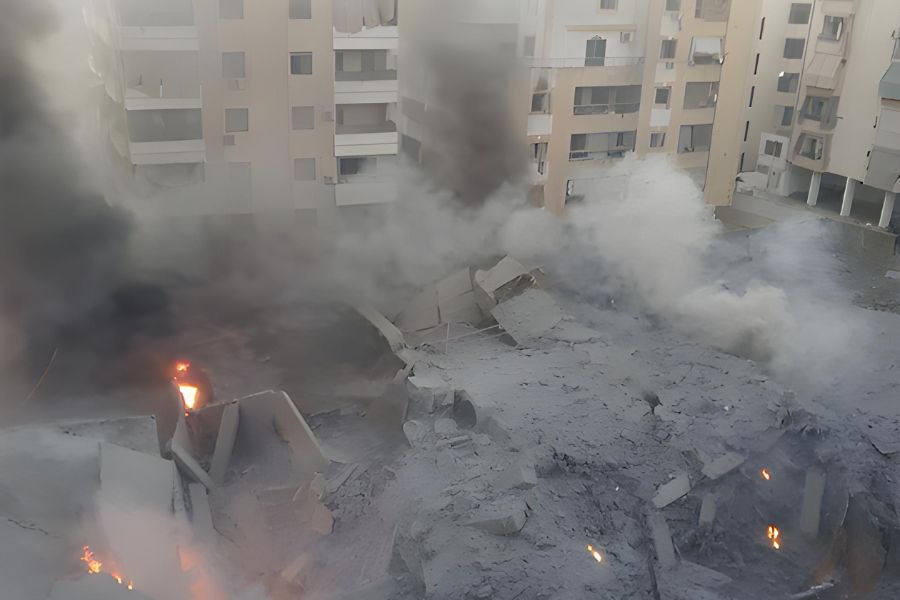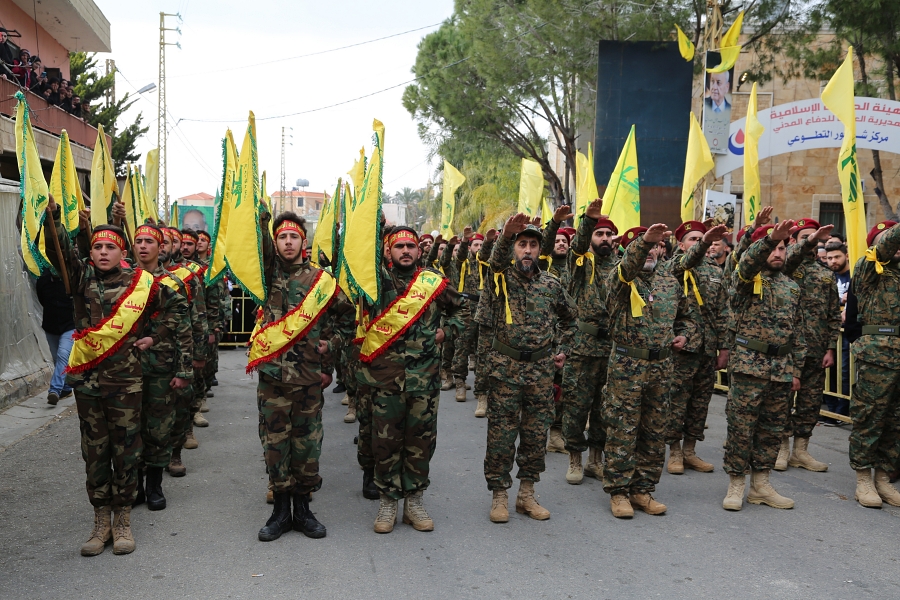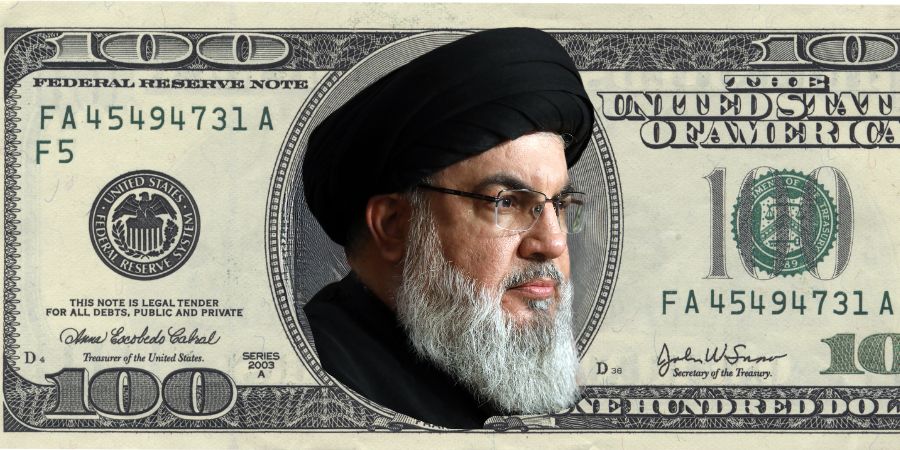83 tons of explosives, which landed with precise timing by Israeli Air Force Jets, directly on Hezbollah’s main headquarters in the heart of the Dahieh district in central Beirut – erased within seconds the entire central command leadership of the terrorist organization.
“The IDF eliminated Hassan Nasrallah, the leader of the Hezbollah terrorist organization and one of its founders, along with Ali Karaki, the commander of Hezbollah’s Southern Front, and other Hezbollah commanders,” the IDF spokesperson announced on Saturday – thus issuing the official stamp on the departure from the scene of one of the most bitter, difficult, and sophisticated enemies Israel has known.
Nasrallah, considered one of the founding fathers of the organization, which he established alongside Lebanese Shiite and Iranian factors somewhere in the early 1980s, led Hezbollah for more than three decades. Even in his early years in the organization, at just 22 years old, he was appointed to the important position of being responsible for the “Bekaa” area and quickly advanced up the ranks.
Just three years later, he became the deputy chairman of the Beirut Council, one of the three arms of the militia at the time, and quickly became the organizational and military head in the city, alongside his second hat – a member of the organization’s political bureau. In 1987, he became the “head of the executive council,” and by virtue of this, served as a member of the organization’s supreme council.

The significant turning point in his life came in the early 1990s. In 1992, the then Secretary-General of Hezbollah, Abbas al-Musawi, was assassinated by the IDF – and so just a decade after the organization’s establishment, at only 32 years old, Nasrallah was appointed to lead it.
For 32 years, he was the main decision-maker and the sole approver of strategic processes, during which the Shiite-extremist leader turned the organization from a small, almost negligible movement in global terms, into one of the deadliest, most powerful – and even wealthiest terrorist organizations in the world.
Hundreds of Millions Courtesy of the Iranian Patron
For a decade, since we first published in Forbes Israel the list of the wealthiest terrorist organizations in the world, the Hezbollah terrorist organization has been at the top of the ranking, with revenues that cross the billion-dollar threshold per year. Iran, which invested a cumulative amount of tens of billions of dollars in the “Hezbollah project” over more than three decades, has been the main and important capital source of the organization over the years. According to the investigation we published, the budget that the Quds Force allocates to Hezbollah is estimated at $700 to $800 million per year – depending on the extent of sanctions wrapped around the Ayatollahs’ regime’s neck and the price of oil, of course, which accounts for about 80% of Iran’s income.
The main victim of the toxic connection between Iran and Hezbollah is Lebanon itself. In recent years, its economic and political situation has deteriorated, and as a mirror image, Hezbollah’s influence on the country and Iran’s grip on it have strengthened.
Thus, as Lebanon became more polarized, weak, and dependent, Nasrallah’s hold on the Shiite strongholds strengthened – and with it, Iran’s influence. Oil shipments and aid transferred from Iran further strengthened Nasrallah’s position among the Shiite population. The distress of the Lebanese people, still suffering from shortages of basic products such as food, medicine, and fuel, was exploited by Hezbollah and Iran to bring as many of Lebanon’s needy citizens under their patronage – especially among the Shiite population. It began with a supportive nursing, educational, and economic network for the needy population, continued with the creation of existential dependence, and finally – the recruitment of that population for Hezbollah.

“Hezbollah has established a state within a state. ‘Hezbollahstan’ – the entire area from Beirut to the Israeli border and in the Bekaa on the Syrian border is under its control,” explained Major General (Res.) Amos Gilad in a special interview with Forbes Israel. “In this area, Hezbollah provides civil services where the state fails, intentionally to increase its influence.”
And so, while the economy collapses, the currency crashes, and inflation erodes wages and pushes half of Lebanon’s population below the poverty line, Hezbollah has continued in recent years to enjoy huge budgets flowing into its coffers directly from Iran. According to Israeli intelligence sources, Iran has funneled about $750 million a year to the organization.
Together with Drug Cartels
But this is not Hezbollah’s only source of capital. For more than three decades, Nasrallah has known with great sophistication to “diversify the risks” and grow additional funding sources. Hezbollah’s activity in the Latin American drug industry began in the early 1980s but has gained momentum since 2006.
Under the guidance of Imad Mughniyeh – Nasrallah’s close friend, and who served for many years until his assassination as “Hezbollah’s Chief of Staff” – a close collaboration was formed between activists and supporters of the organization in the large Shiite-Lebanese diaspora in South America and members of the largest and most powerful drug cartels in the world. A sophisticated network that has grown and developed now transports hundreds of tons of drugs annually to Europe and North America and is responsible for money laundering in cycles estimated at billions of dollars.
In service and in close cooperation with drug cartels and crime families, Hezbollah’s facilitators operate throughout the entire continent – from the tri-border area of Argentina, Brazil, and Paraguay, through Colombia to Venezuela, which has become, under the direct influence of President Nicolas Maduro, a central artery in the global drug route. In the last decade, the organization has deepened its presence in Mexico as well, where it operates intensively not only in drug smuggling and money laundering on a massive scale for the large crime families but also in transferring the extensive knowledge it has accumulated over the years in preparing explosive charges and digging tunnels.
To this day, the narco-terrorist network rolls billions of dollars a year, from which Hezbollah members cut fat coupons. “Some of the money that Hezbollah launders is the product of its own illegal activity, but most comes from the cartels, which pay the organization for money laundering and drug smuggling,” Dr. Emanuele Ottolenghi, a senior research fellow at the American research institute FDD, told Forbes Israel in an interview.

According to him, it’s difficult to quantify the exact amount the cartels pay, “but it is significant,” he says. According to existing estimates, Hezbollah’s money launderers charge a commission ranging from 7% to 15%, and based on just one program uncovered in 2011 by the U.S. Drug Enforcement Administration (DEA), this amount totals about $14 to $30 million per month and hundreds of millions of dollars per year. Thus, even after ‘deducting expenses’, Hezbollah is left with a fat slice of the massive drug industry, which rolls over about $500 billion a year.
Hezbollah’s Bank
Over the years, Hezbollah has built a financial arm – through which it manages an economic empire that launders and generates massive cash flows and economic activity for it. This activity includes disguised charitable organizations and institutions, spread around the world, yielding revenues worth about $100 million a year for it.
Within all of these, Hezbollah has been managing for many years a sophisticated global money laundering network, deeply intertwined in its global business activity – real estate businesses in Europe, second-hand car agencies in the U.S., and even kosher companies for Brazil’s thriving halal meat industry market.
Alongside these, the organization’s facilitators engage in counterfeiting products and cash, trading in blood diamonds, arms trafficking, trading in minerals from pirate mining, smuggling luxury products – and as mentioned, drug trafficking, mainly heroin and cocaine, which yield Hezbollah hundreds of millions of dollars every year.
“They have a wide infrastructure of facilitators all over the world. Wherever there’s a Shiite community – there’s Hezbollah,” former senior Mossad official Uzi Shaya told Forbes Israel in an exclusive interview. “A large part of this circle is criminal and includes facilitators engaged in drug trafficking, human trafficking, rare animals, diamonds, or pirate trade in natural resources. This infrastructure assists Hezbollah both on the financial level and on the operational level.”





